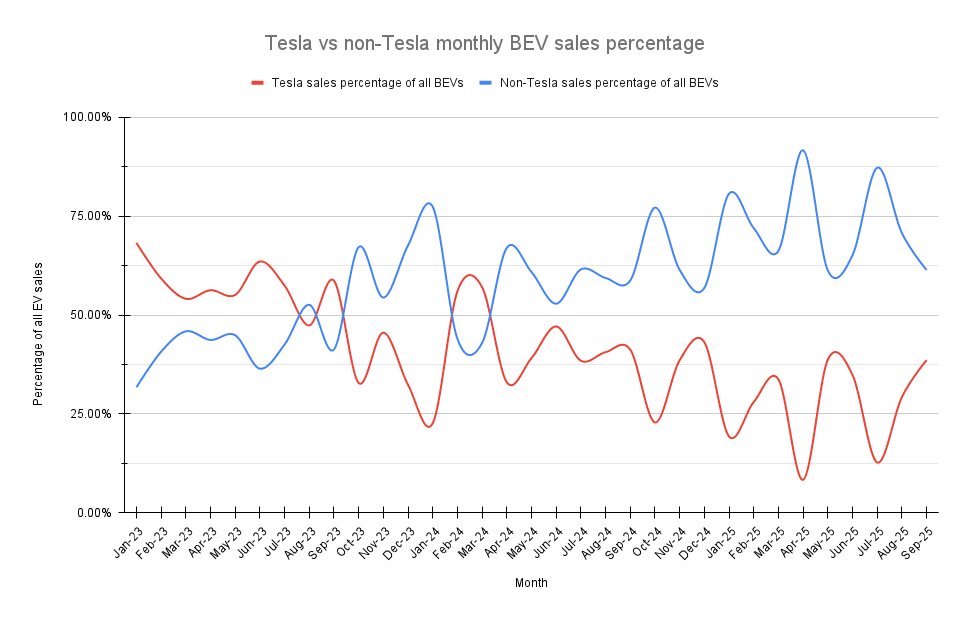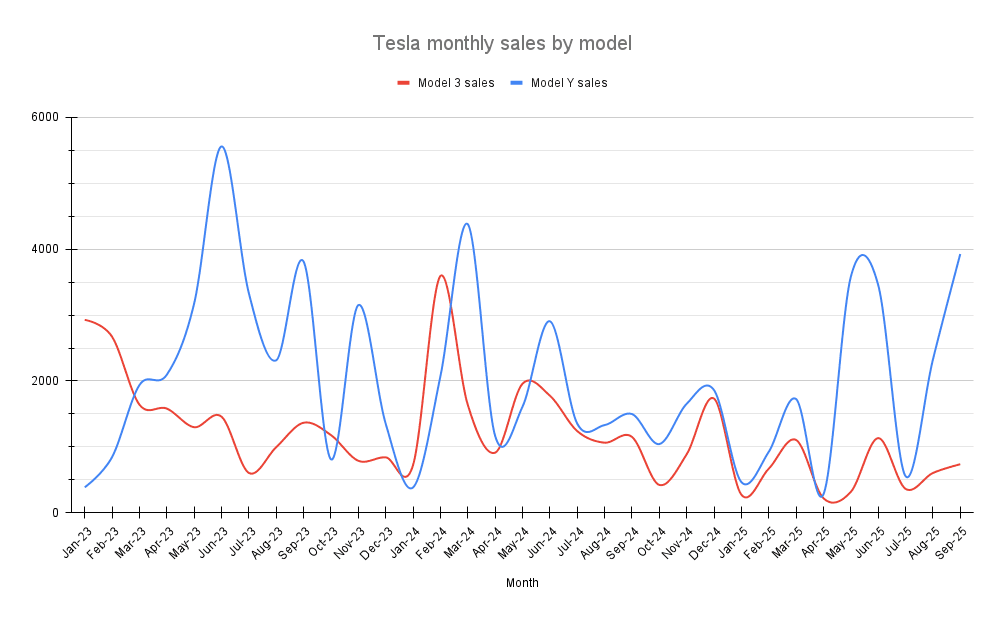How long can Tesla fend off BYD as Australia’s most popular EV brand?
Tesla has long been Australia’s most popular electric car brand, but with an ever-growing range of models and strong competition from second-placed BYD, Tesla’s tight grip on the top spot appears to be waning.
BYD has already outsold Tesla in 3 months of this year in April, July and August, growing from strength to strength up to and including September with 42% year-on-year growth.
Extremely low Tesla sales 500 only in April were subsequently explained by logistical issues, although the 26% year-on-year decline shows that there is clearly more to the story.

Despite declining volumes, Tesla still holds a significant lead with 22,653 YTD sales versus BYD’s 17,019. Unless something unforeseen happens in the last quarter, it looks like Tesla will retain the number one position until at least 2025.
Tesla’s historical dominance of the Australian EV market is best demonstrated by its sales of the majority of all EVs until mid-2023, when things start to get more interesting.

Except for February and March 2024, which coincide with the arrival of the updated Model 3, Tesla sales account for less than half of all BEV sales from October 2023.
Two other things are clear from this second graph, Tesla sales are highly variable between months and as a percentage of the total BEV market they are undoubtedly declining, with the gap between Tesla and non-Tesla widening over time.
This trend is due to several different factors, with Tesla’s sales decline as noted above clearly having an effect. How much of this decline is due to Elon Musk’s waning support is hard to say, but the topic is sure to spark internet debate and lively comment threads from both sides of the Tesla camp.
Another major factor is the increased competition in the market and the huge growth in the choice of models from other car manufacturers. In October 2023 our EV models page listed 56 currently available models. That number has now increased to 102 models in October 2025, with nearly 30 more on the horizon.
With only the Model 3 and Model Y in Tesla’s local lineup, they look increasingly dated despite major updates, new variants and fully autonomous driving (with supervision) to make them more interesting of late.

By contrast, BYD’s approach of regularly introducing new models seems to be paying off for them, especially the Sealion 7, which quickly climbed to second place on the market. sales charts behind the Tesla Model Y. However, it seems unlikely to challenge the Model Y, with less than half the sales of Tesla’s most popular model.
Two more electric vehicles will join BYD’s line-up in November, the Atto 1 hatchback pictured below, as well as the Atto 2 small SUV. With an expected price tag of around $25,000, the Atto 1 will slot comfortably under the BYD Dolphin Essential as the cheapest electric car in Australia.

BYD has set expectations for the Atto 1 and Atto 2 at around 300 sales per month. If we take those numbers and add 600 vehicles per month to BYD’s YTD numbers for 2025, their total estimated sales would reach 22,419, which is very close to Tesla’s actual number of 22,653.
With BYD’s strong year-on-year growth and 2 new models coming soon, I think 2025 could be the last year Tesla holds onto the top spot as Australia’s most popular EV brand.
Also see The Driven’s sales figures here: Australian Electric Vehicle Sales by Month in 2025 – by Model and Brand

Tim has 20 years of IT experience, including 14 years as a Network and Site Reliability Engineer at Google Australia. He is an EV and renewable energy enthusiast who is most passionate about helping people understand and adopt these technologies.
